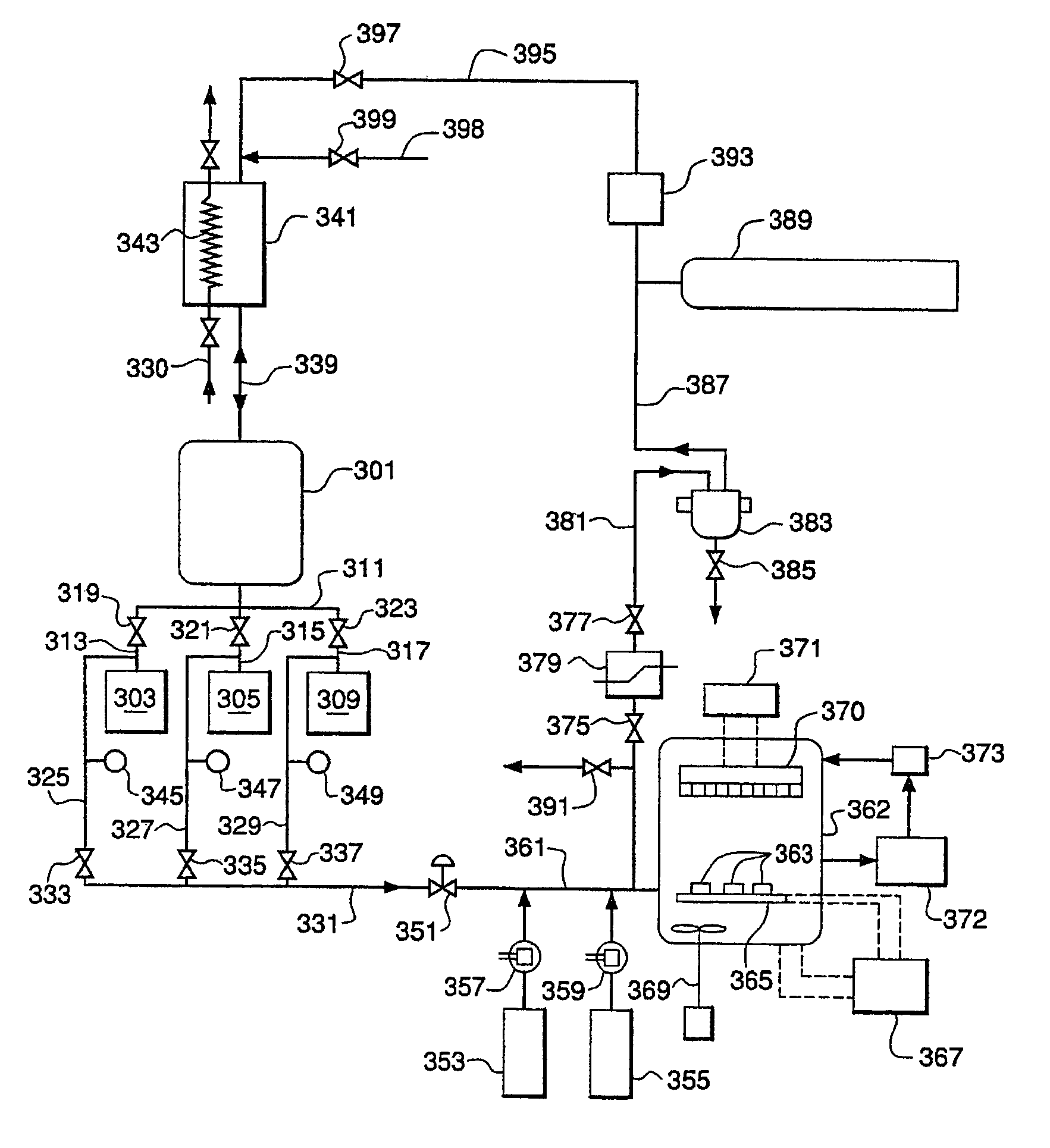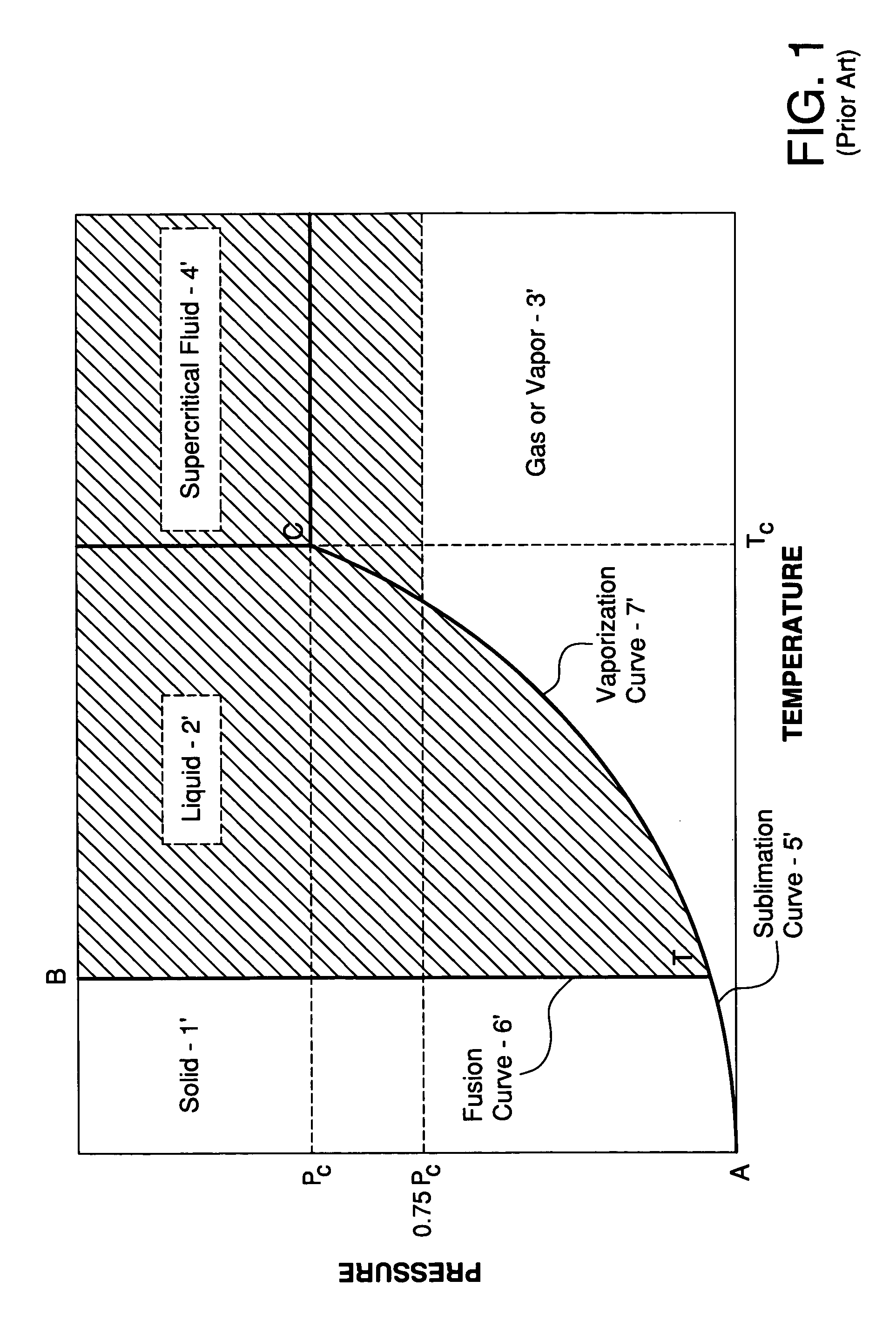Processing of semiconductor components with dense processing fluids and ultrasonic energy
a technology of semiconductor components and processing fluids, applied in the direction of photomechanical treatment originals, cleaning using liquids, instruments, etc., can solve the problems of small contamination quantities, short circuits, open circuits, and other defects
- Summary
- Abstract
- Description
- Claims
- Application Information
AI Technical Summary
Benefits of technology
Problems solved by technology
Method used
Image
Examples
example 1
[0171]An embodiment of the invention according to FIG. 4 is used to treat a silicon wafer having a photoresist layer that has undergone multiple processing steps including exposure, development, etching and / or implantation with a dense processing fluid as described below.
[0172]Step 1: Pressurization vessel 303 having a volume of 2.71 liters is filled completely with 4.56 lb of saturated liquid CO2 at 70° F. and 853.5 psia. The density of the initial CO2 charge is 47.6 lb / ft3. The vessel is sealed.
[0173]Step 2: The pressurization vessel is heated until the internal pressure reaches 5,000 psia. The density of the contained CO2 remains at 47.6 lb / ft3, and the temperature reaches 189° F. The contained CO2 is converted to a dense fluid in the supercritical region (see FIG. 2).
[0174]Step 3: A contaminated silicon wafer is loaded into process tool 362 having an interior volume of 1 liter. The process tool is evacuated and the vessel walls and wafer are held at 104° F.
[0175]Step 4: Valve 33...
example 2
[0181]The process of Example 1 is repeated except that ultrasonic transducer system 370 is operated during the cleaning period of step (5) at a sonic frequency which begins at 20 KHz and is increased at a constant rate during the cleaning period such that the sonic frequency is 200 KHz at the end of the cleaning period.
example 3
[0182]The process of Example 1 is repeated except that ultrasonic transducer 370 is operated during the cleaning period of step (5) at a sonic frequency which starts at 200 KHz and is decreased at a constant rate during the cleaning period such that the sonic frequency is 20 KHz at the end of the cleaning period.
PUM
| Property | Measurement | Unit |
|---|---|---|
| Fraction | aaaaa | aaaaa |
| Fraction | aaaaa | aaaaa |
| Fraction | aaaaa | aaaaa |
Abstract
Description
Claims
Application Information
 Login to View More
Login to View More - R&D
- Intellectual Property
- Life Sciences
- Materials
- Tech Scout
- Unparalleled Data Quality
- Higher Quality Content
- 60% Fewer Hallucinations
Browse by: Latest US Patents, China's latest patents, Technical Efficacy Thesaurus, Application Domain, Technology Topic, Popular Technical Reports.
© 2025 PatSnap. All rights reserved.Legal|Privacy policy|Modern Slavery Act Transparency Statement|Sitemap|About US| Contact US: help@patsnap.com



